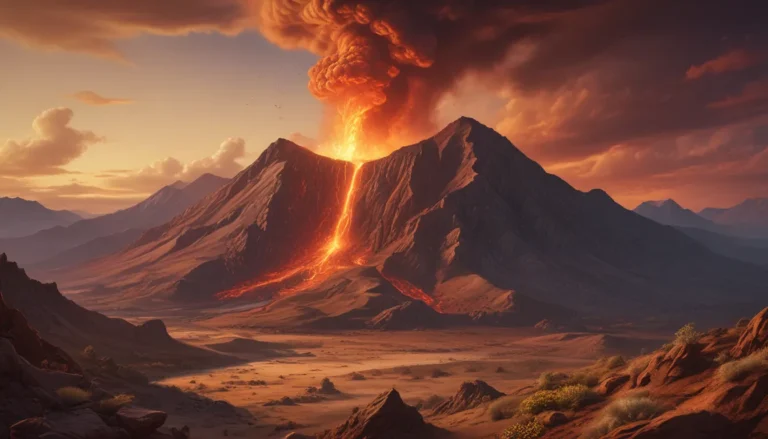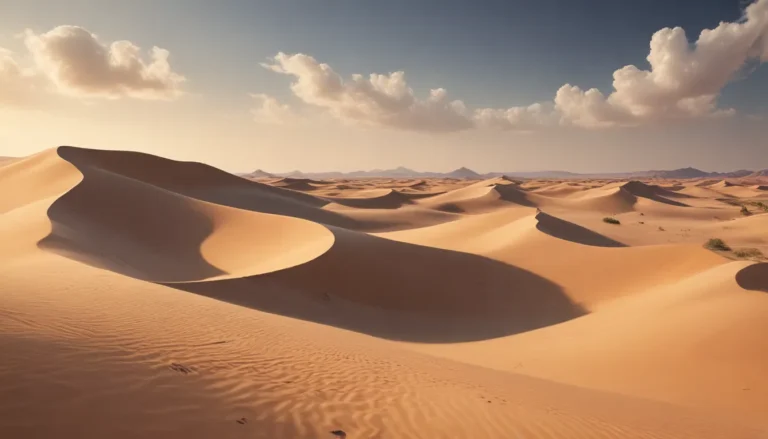A Note About Images: The images used in our articles are for illustration purposes only and may not exactly match the content. They are meant to engage readers, but the text should be relied upon for accurate information.
Welcome to the intriguing world of the rainshadow effect, where geography dances with climate to create breathtaking landscapes and unique ecosystems. This natural phenomenon occurs when a mountain range blocks moist air, causing one side to receive copious rainfall while the other side remains dry. Join us as we unveil 13 astonishing facts about the rainshadow effect and explore its impact on our planet.
Understanding the Rainshadow Effect
- The Rainshadow Effect creates dry areas behind mountains, leading to deserts and unique ecosystems.
- It influences agriculture and temperature, shaping diverse landscapes worldwide.
- Appreciating how geography impacts climate and ecosystems helps us understand our planet’s beauty and diversity.
The Mystery Unraveled
When prevailing winds encounter a mountain range, they are forced to rise and cool down, losing moisture and creating a rainshadow on the leeward side of the barrier. This results in significantly less rainfall on the leeward side, leading to arid conditions and the formation of deserts or semi-arid regions.
Examples Around the World
- The Great Basin in the United States experiences dry conditions due to the effect of the Sierra Nevada mountain range.
- The Atacama Desert in Chile, one of the driest places on Earth, is primarily affected by the Andes Mountains.
- The Gobi Desert in northern China faces minimal rainfall due to the Himalayan mountain range.
- The Namib Desert in Namibia is known for its towering sand dunes, influenced by the Namibian escarpment.
Implications for Ecosystems
Areas affected by the Rainshadow Effect boast unique ecosystems adapted to arid conditions, showcasing specialized desert plants and animals. This phenomenon can also impact agriculture and human settlements, often presenting challenges due to limited water availability and influencing settlement distribution.
Microclimates and Temperature Extremes
The Rainshadow Effect can create microclimates within a region, leading to variations in temperature and precipitation. In some cases, it can result in temperature extremes, with hotter summers and colder winters due to the lack of moisture in the air.
Beyond Mountains
While the Rainshadow Effect is often associated with mountains, it can also occur in other geographical features like tall buildings or cliffs, affecting wind patterns and creating areas of reduced rainfall. This phenomenon plays a pivotal role in shaping diverse landscapes worldwide, from deserts and steppes to grasslands and chaparral.
FAQs Unraveled
- What causes the rainshadow effect?
-
A mountain range blocks moist air, forcing it to rise and cool on the windward side, leading to heavy rainfall. The leeward side experiences limited precipitation, creating a rain shadow.
-
Which regions are most commonly affected?
-
Regions on the leeward side of mountain ranges, such as the Atacama Desert and the Gobi Desert, are commonly impacted by the rainshadow effect.
-
How does it impact local ecosystems?
-
The rainshadow effect results in arid conditions, leading to unique ecosystems adapted to survive with minimal rainfall.
-
Can it be beneficial?
-
While challenging, the rainshadow effect can create ideal conditions for agriculture in some regions, with abundant sunshine and opportunities for irrigation.
-
How does it contribute to desert formation?
- The lack of rainfall on the leeward side of mountain ranges creates a dry environment, eventually leading to desertification.
In Conclusion
The rainshadow effect is a captivating natural phenomenon that shapes our world in remarkable ways. By understanding how it influences climate and ecosystems, we gain a deeper appreciation for the intricate relationship between geography and the environment. From the deserts of Chile to the unique ecosystems of the Great Basin, the rainshadow effect paints a diverse tapestry of landscapes that highlight the beauty and resilience of our planet.
Our Commitment to Quality
Every fact we present is contributed by real users like you, ensuring a wealth of diverse insights and information. Our dedicated editors meticulously review each submission to maintain the highest standards of accuracy and reliability. Trust in our commitment to delivering trustworthy and engaging content as you explore and learn with us.






